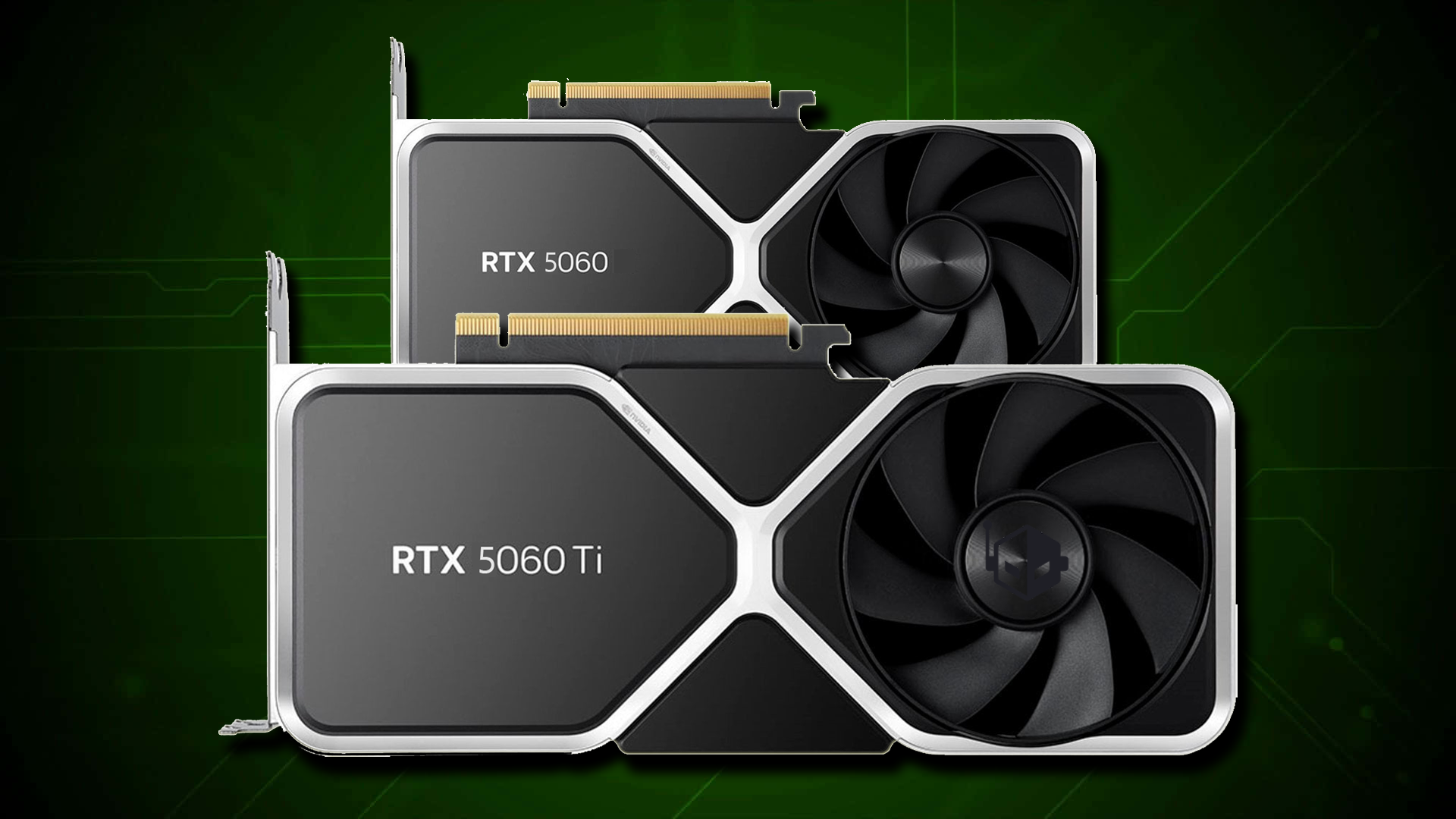Learning From The Nvidia RTX 5060: Improving GPU Reviews And Expectations

Table of Contents
Analyzing Pre-Release Hype and Marketing
Examining Nvidia's Marketing Strategies
Nvidia's marketing campaign for the RTX 5060 emphasized its capabilities for ray tracing, high frame rates, and overall gaming performance. Marketing materials showcased impressive benchmarks and targeted specific gaming demographics, particularly those focused on 1080p and 1440p gaming.
- Specific claims: Marketing often highlighted specific frame rates achievable in various games at different settings. These claims, while technically accurate in some controlled scenarios, didn't always reflect the broader user experience.
- Benchmark limitations: The benchmarks used in marketing often lacked transparency regarding testing methodologies and system configurations, leading to potential misinterpretations. Specific details about CPU, RAM, and driver versions were sometimes omitted.
- Target audience: Nvidia successfully targeted gamers seeking a balance between performance and price, emphasizing the RTX 5060's suitability for 1080p and 1440p gaming. However, this targeting may have inadvertently downplayed potential limitations at higher resolutions.
Conclusion: Nvidia's marketing campaign, while effective in generating initial interest, may have over-promised on certain aspects of the RTX 5060's performance, leading to inflated expectations among consumers.
Dissecting Real-World Performance and User Reviews
Gathering Data from Various Sources
To understand the real-world performance of the Nvidia RTX 5060, we examined data from multiple sources. This included independent reviews from reputable tech websites, user feedback from forums like Reddit and hardware communities, and benchmark data from sites specializing in GPU performance comparisons.
- Performance discrepancies: A significant gap emerged between advertised performance and actual results in several games and settings. Frame rates often fell short of marketing claims, particularly at higher resolutions and with ray tracing enabled.
- User reviews: User reviews revealed common complaints regarding thermal performance (especially under heavy load), driver issues impacting stability, and occasional performance inconsistencies across different titles. Positive feedback frequently centered on the card's price-to-performance ratio for 1080p gaming.
- Driver updates: The impact of driver updates on performance varied, with some users reporting significant improvements while others experienced no noticeable changes or even regressions.
Conclusion: Real-world performance of the RTX 5060 showed a significant deviation from the marketing promises in several aspects. While acceptable for 1080p gaming, users seeking higher resolutions or consistent ray tracing performance experienced limitations.
Identifying Areas for Improvement in GPU Reviews
The Importance of Transparency and Detailed Testing
To bridge the gap between marketing claims and reality, GPU reviews need to prioritize transparency and rigorous testing.
- Standardized benchmarks: Adopting standardized benchmark tests and clearly documenting test methodologies (hardware, software, settings) would create a fairer and more meaningful comparison between different GPUs.
- Conflict of interest: Reviewers must disclose any potential conflicts of interest, such as sponsorship or affiliations with manufacturers. This ensures unbiased and objective assessments.
- Real-world scenarios: Reviews should incorporate more real-world gaming scenarios, including diverse game titles and settings, rather than solely relying on synthetic benchmarks.
Conclusion: By improving testing methodologies and increasing transparency, GPU reviews can provide a more realistic and informative picture of a product’s actual performance, reducing the likelihood of inflated expectations.
Shaping Realistic Expectations for Future GPU Purchases
The Role of Critical Thinking and Research
Consumers need to develop more critical thinking skills when evaluating GPU marketing materials.
- Multiple review sources: Consulting multiple independent review sources is crucial to obtain a balanced perspective, avoiding reliance on a single, potentially biased, source.
- System requirements: Understanding system requirements (CPU, RAM, PSU) is crucial to avoid performance bottlenecks that might negatively impact the overall gaming experience.
- Real-world experiences: Focus on real-world gaming experiences reported by users, alongside benchmark data, for a comprehensive understanding of GPU performance.
Conclusion: By adopting a more critical and research-oriented approach to GPU purchasing, consumers can better align their expectations with the actual capabilities of the product.
Conclusion
The Nvidia RTX 5060 launch highlights a critical disconnect between marketing hype, real-world performance, review practices, and consumer expectations. Transparent reviews with rigorous testing methodologies, combined with more critical analysis from consumers, are essential to managing expectations effectively.
Key Takeaways: This case study underscores the importance of transparent and detailed GPU reviews, the need for consumers to critically analyze marketing claims, and the value of realistic expectations regarding GPU performance.
Call to Action: Learn from the Nvidia RTX 5060 experience! When researching your next GPU purchase, especially Nvidia RTX GPUs, be sure to delve into multiple independent reviews, compare benchmark results with caution, and consider real-world user experiences. Make informed decisions based on thorough research, avoiding the pitfalls of unrealistic expectations surrounding any new GPU, including future Nvidia RTX series cards.

Featured Posts
-
 Kidnapped Idf Soldier Matan Angrest Injuries Visible In Released Photograph
May 26, 2025
Kidnapped Idf Soldier Matan Angrest Injuries Visible In Released Photograph
May 26, 2025 -
 Paris Roubaix Bottle Throwing Spectator Turns Himself In
May 26, 2025
Paris Roubaix Bottle Throwing Spectator Turns Himself In
May 26, 2025 -
 Mercedes Driver George Russell Settles 1 5m Debt Contract Implications Explored
May 26, 2025
Mercedes Driver George Russell Settles 1 5m Debt Contract Implications Explored
May 26, 2025 -
 Mercedes Faces Crucial Decision Re Signing George Russell Or Facing A Setback
May 26, 2025
Mercedes Faces Crucial Decision Re Signing George Russell Or Facing A Setback
May 26, 2025 -
 Ferstapen Se Mercedes I Omada Topotheteitai
May 26, 2025
Ferstapen Se Mercedes I Omada Topotheteitai
May 26, 2025
Latest Posts
-
 Kaupallinen Yhteistyoe Lainaa Korkeiden Korkojen Aikaan Loeydae Edullisempi Laina Lainanvertailulla
May 28, 2025
Kaupallinen Yhteistyoe Lainaa Korkeiden Korkojen Aikaan Loeydae Edullisempi Laina Lainanvertailulla
May 28, 2025 -
 Manchester United In 25m Transfer Battle With Liverpool
May 28, 2025
Manchester United In 25m Transfer Battle With Liverpool
May 28, 2025 -
 Liverpools Pursuit Of Rayan Cherki A Transfer Analysis
May 28, 2025
Liverpools Pursuit Of Rayan Cherki A Transfer Analysis
May 28, 2025 -
 Transfer News Man United Ahead In Race To Sign Rayan Cherki
May 28, 2025
Transfer News Man United Ahead In Race To Sign Rayan Cherki
May 28, 2025 -
 Winning The Euromillions 202m Jackpot What To Expect
May 28, 2025
Winning The Euromillions 202m Jackpot What To Expect
May 28, 2025
